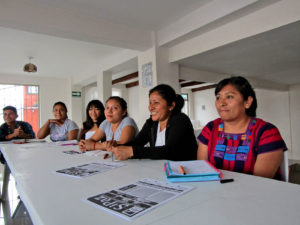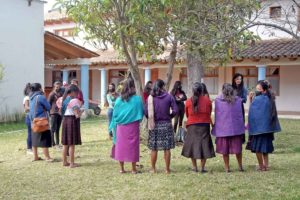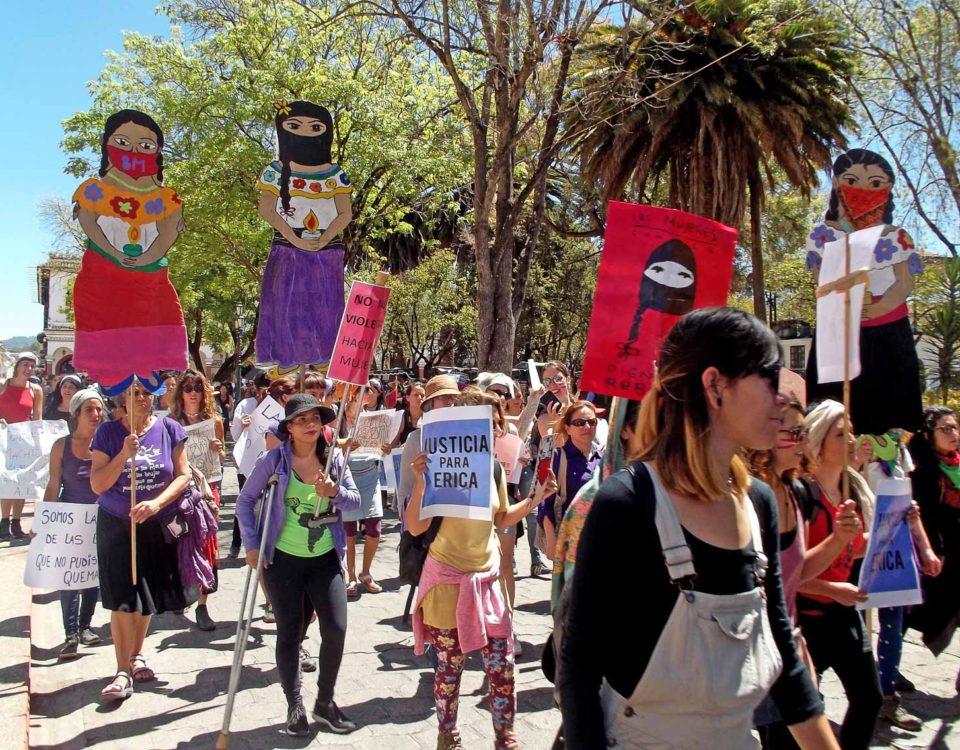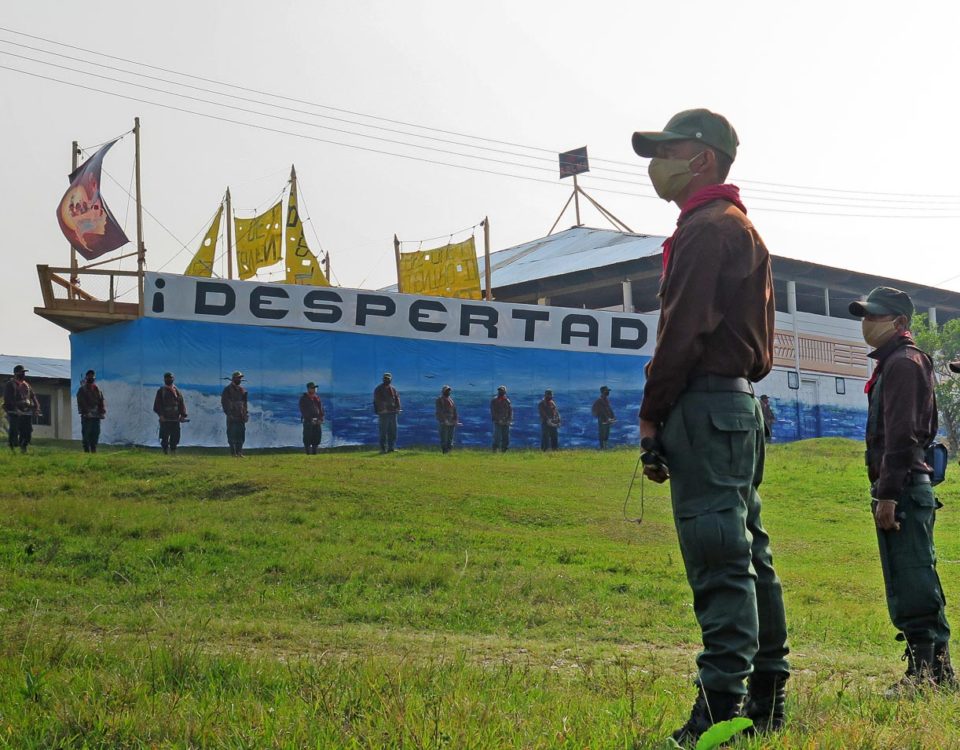
LATEST: Midterm Elections – Dispute for the Continuity of the Fourth Transformation
09/06/2021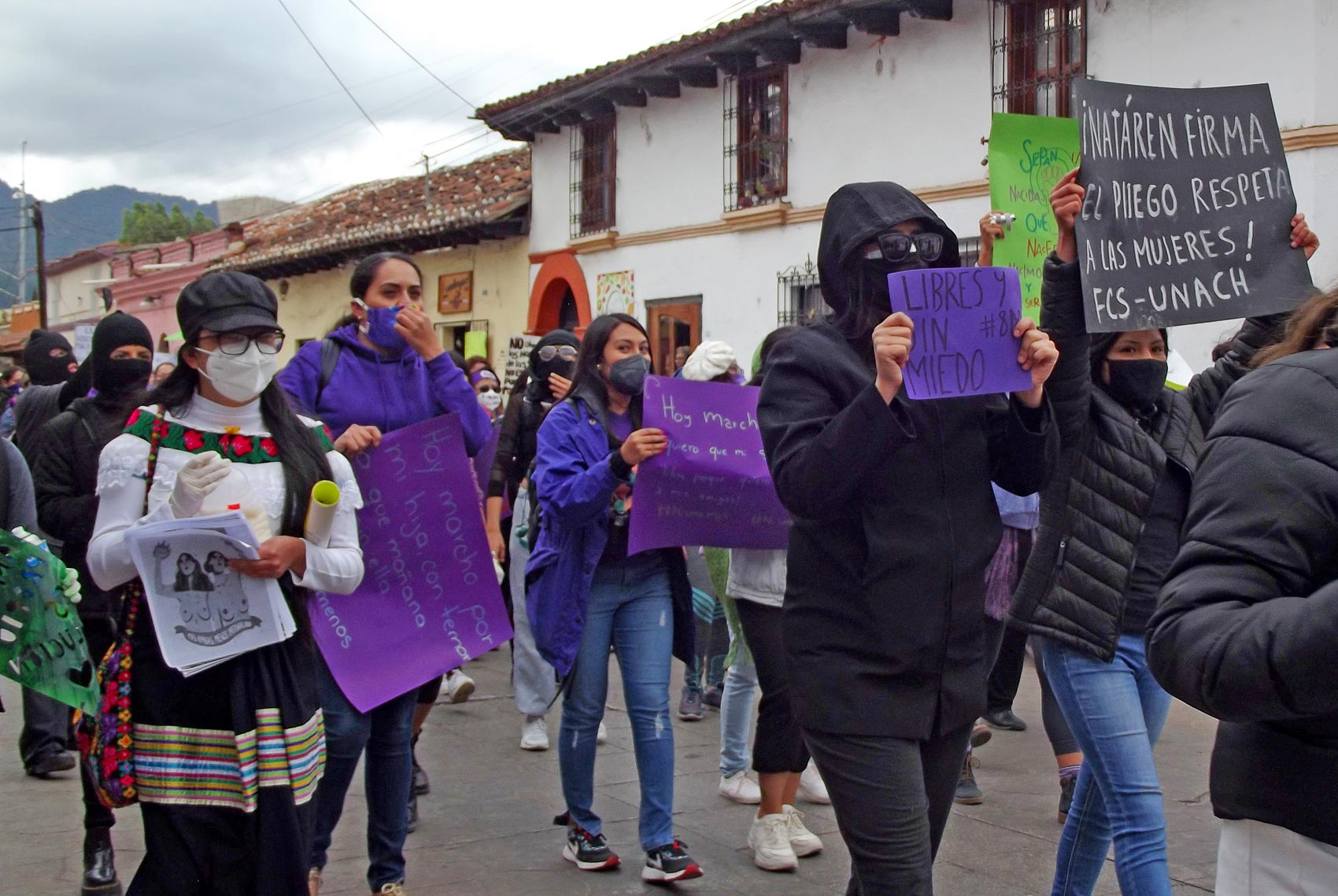
ARTICLE: 8M – Confronting the “Virus” of Violence against Women in Mexico
09/06/2021
“About two billion people live in countries affected by conflict, violence or delicate situations; of them, more than a third are young people between 15 and 24 years old.”
A ccording to the United Nations Youth Strategy Report (2020), the world is home to the largest generation of young people in history with 1.8 billion people, of which about 90% live in developing countries. In Mexico there are 30.7 million young people, that is, 24.6% of the total population.
Within the framework of the Youth, Peace and Security project of the Global Partnership for the Prevention of Armed Conflict (GPPAC), the International Service for Peace (SIPAZ), the Whitaker Peace and Development Initiative (WPDI) and the Support Commission for Community Unity and Reconciliation (CORECO) carried out a series of surveys aimed at young people from Mexico, the United States and Canada, the objective of which was to find out about their perception of violence, conflict and peace.
The results are not representative of all youth in the region. However, they have allowed us to deepen our reflection on the subject and make an intersection with the current health situation. The questionnaires were answered online by 93 young people between 16 and 36 years of age, during the first semester of 2021. For practical and methodological reasons, this analysis focuses on the voice of Mexican youth, from Nuevo Leon to Chiapas. This text is only a first approach to the experiences and perspectives of youth about the current situation of the country, the state of their living conditions and their perception of the possibilities of building roads for well-being and peace.
What does it mean to be young?
The United Nations (UN) defines young people as those between 15 and 24 years of age. In Mexico, the age range goes from 15 to 29 according to the Mexican Institute of Youth (IMJUVE). However, the concept of youth is colored by the sociocultural, institutional, economic and political factors of each country, even varying from one region to another. In Mexico, for example, to construct this definition it is necessary to consider all the areas occupied by this population block, from education to work, from cultural to political; their capabilities, their opportunities, but also their needs and abuses must be recognized. For this reason, seeking to enclose all the complexities of being young in a concept delimited only by age places us on a linear plane where youth is reduced to a transition stage, “in the transition of a condition from children to adults”, reducing it to a “fragile and temporary period of life.”
Even when the IMJUVE speaks of youth as the moment in life when a person begins to establish their identity based on different forms of behavior, a moment of projection into the future, of creating expectations and dreams; the actions that both governments and society design and implement for the welfare of youth have a contradictory sense, raising a discourse of centrality and importance, but allocating few efforts and resources for their development. This contradiction contributes to obstructing the access of young people to their basic rights.
Although many of the young people surveyed align themselves with the conceptualization of youth based on the age criterion, as well as the “possibility or power of action in the future”, many of them identify themselves as active subjects, participatory and with diverse capacities to positively influence their environment.
Youth and violence
According to the article by Animal Politico “The Reality of Youth in Mexico: Poverty, Discrimination and Non-compliance with their Rights”, published in 2018, in Mexico the situations of violence that affect young people are mainly discrimination, lack of access to basic rights, and poverty. However, the young people who participated in the survey perceive insecurity and crime as the main forms of violence that affect their daily lives.
1) Insecurity and crime
Both young women and men identified assaults, physical attacks, kidnappings, and murders as the most common forms of violence in their environment. Widespread insecurity was outlined as the greatest risk. An overwhelming majority expressed feeling “fear” of going out to carry out everyday activities such as going to school, working or sharing public spaces. The street was identified as one of the most unsafe spaces, while common crime and organized crime were identified as the main perpetrators of violence.
The various manifeatations of gender-based violence also figured prominently in the responses. Both women and men expressed concern about the high incidence of street harassment and the risk of being assaulted. In particular, women claimed to feel unsafe during all the time they spend in public spaces and transport. The fear of “going out and having something happen to me” or the possibility of “going out alone and not coming back” appeared repeatedly among the answers.
2) Discrimination
According to the article “Young Mexicans: Structural Violence and Criminalization” (Urteaga and Moreno, 2020), the discrimination faced by youth due to their age puts them at a disadvantage to integrate into working life and participate politically since “youth subordination” in the social imaginary – which assigns to youth a definition essentially linked to irresponsibility and lack of ambition and commitment – favors “systematic discriminatory practices that exclude this sector of the population and place it in a highly vulnerable situation.”
The questionnaires clearly reflect this type of exclusion. The participants claimed to face various forms of age discrimination directly linked to the perception of inability or irresponsibility. Expressions of how adults think “you can’t”, “you are not taken seriously”, “they think you are stupid” and “there is no trust” came up repeatedly. Some also expressed that due to their condition as young people they are not listened to or considered seriously for jobs: “they don’t let me participate and it is as if my word had no value”, “there are no well-paid jobs, at work they see me as young and do not value my work.”
On the other hand, it was the youth of the southeast region who in greater numbers mentioned racism as one of the expressions of violence they face on a daily basis. Economic background, skin color and origin were the most named causes. Those who belong to an indigenous group expressed that because they are young and indigenous they do not have access to decent work and that in some cases people assume that “because I am young or indigenous I want to steal from them.”
For their part, young women assured that there is gender inequality since they are not allowed to do what they like or face conflicts due to the fact of not accepting the roles that are imposed on them. There are expressions of misogyny in the workplace, unequal salaries and a higher workload at home.
3) Poverty and unemployment
According to the National Council to Prevent Discrimination (CONAPRED) “almost half of the population of young people in Mexico lives in poverty.” This situation places them as a highly vulnerable sector, since they are perceived as a threat to social cohesion, excluding them from work or educational spaces and opportunities.
Although young people recognized security-tranquility as the first necessary element to live in peace and achieve wellbeing, the second most mentioned factor was access to and guarantee of basic rights. A large majority of the responses focus on livelihoods and stable work as a sine qua non for a decent life. “Having the necessary means to have a decent life and physical, mental and socio-emotional health” and “having an economic stability that allows me to cover all my needs” are some examples of the opinions expressed.
4) Lack of access to education and health services
On another note, school absenteeism and dropping out continue to be a challenge for youth in Mexico, particularly due to the social gaps that afflict impoverished youth, especially in rural areas. Such is the case of the state of Chiapas, where the percentage of young people between 15 and 24 years old who attend school is 35%, the lowest at the national level, while the highest is presented by Mexico City with 55% of young people enrolled in school, this according to the INEGI’s 2020 Population and Housing Census.
Excessive travel times to schools, study plans that exclude young people with different abilities or speakers of indigenous languages, as well as a high percentage of young people who do not have access to education due to lack of income, are some of the most visible problems .
Additionally, 5.2 million female and male students of all levels interrupted their studies due to the crisis generated by the COVID-19 pandemic. In other words, students between the ages of three and 29 “did not enroll in the 2020-2021 school year”, according to the Survey to Measure the Impact of COVID-19 on Education (ECOVID-ED) 2020. On the other hand, it was found that of the total of young people in Mexico, only 32.3% have access to health services.
Access to education and health are two very present themes in the analysis that the youths took from their reality. Even though these issues were mentioned on fewer occasions, aspects such as fear of getting sick and not being able to pay for medical treatments, concern for one’s own health and that of family members, as well as the desire to live in a healthy environment, were factors mentioned in the questionnaires.
The perception of young people as culprits
Despite all the forms of violence that youth face on a daily basis, historically adultcentrism and generational stereotypes have contributed to building an image of the young as a perpetrator or aggressor, with which the condition of youth remains “compromised and vulnerable” in the identification of priority victims of violence for attention.
Urteaga and Moreno point out that the presumption that young people “should be combated for being guilty of violence and crime” has the force to incriminate, justify persecutory actions and establish a legal framework within which young people – criminals – can be killed without this implying committing a crime.
In 2019, the United Nations Office on Drugs and Crime (UNODC) conducted a study on crimes due to gender violence, gangs and other types of murder. The document revealed that it is males over nine years of age who account for more than 50% of the victims according to data from 41 countries and that the probability that a child is murdered “increases along with his age”, establishing the period between 15 and 29 years as the one with the highest risk of homicide in the world.
In America, it is estimated that 46 out of every 100,000 victims are between 18 and 19 years old. An interesting piece of information presented by this publication and that allows us to balance the scale is the fact that “high levels of violence are associated with young men, both victims and perpetrators.”
In this sense, the results of the questionnaires show that men are perceived as the main aggressors in conflicts, while women occupy the first position in the category of victims. To the question “where do you stand on the victim-aggressor scale?” an overwhelming majority identified themselves as a “victim” and in some cases as a “victim/aggressor”, but none identified themselves exclusively as an “aggressor”.
In contrast, the International Peace Institute (IPI) document Youth Participation in Global Governance for Sustaining Peace and Climate Action (2021) shows how youth movements have played an increasingly prominent role in participating in initiatives to build peace in their communities. However, in global policy-making forums, young people continue to be marginalized by age and gender stereotypes, men continue to be identified as perpetrators of violence and young women as passive victims.
The current Federal Government’s strategy for Mexican youth
Given the conditions of lack of access to rights experienced by Mexican youth, organizations such as CONAPRED have pointed out the responsibility of the different levels of government to guarantee “access to a formal, well-paid job with benefits; access to quality health and education services at all levels of care, and the fight against violence in homes, schools and communities (mainly organized crime, common crime and human trafficking).”
In January 2019, the federal government granted the first support of the Youth Building the Future social program, which offers $MXN 4,310 per month (plus social security), connecting 301,003 young people between 18 and 29 years old with a company, institution or workshop. in order to “develop or strengthen work habits and technical skills to increase their future employability possibilities.” In Chiapas 30,299 young people have been connected, of which 54.7% (16,564) are women and 45.3% are men. Different sectors of society have been critical of said program since, although it has a multiple alignment in terms of social rights, scholarship holders can participate only once and at the end of the training period, “the workplace has no obligation” to hire them (Report of the Social Management and Cooperation Organization, GESOC, 2019).
Contrasting the opinions in the questionnaires, it is possible to observe that although there are policies that seek to address priority issues such as access to the rights to education, work and health, the prevailing concerns of Mexican youth continue without a concrete response or program specifically directed at this sector.
What living in peace means for Mexican youth?
In the framework of the UN Forum on the implementation of the agenda on Youth, Peace and Security, Jayathma Wickramanayake pointed out the need to perceive young people as participants in all efforts, particularly those in favor of conflict prevention and peacebuilding, given that the stereotypes and myths of violence that surround them continue to contribute to their marginalization.
“These misperceptions can lead policy makers to adopt a securitized (sic) approach to youth, peace and security and to overlook the efforts of young peacebuilders. In some cases, the perception that young activists are a threat to national security can also put them in danger”, the International Peace Institute notes.
In turn, Jayathma Wickramanayake affirms that “young people resist, protest, organize and implement peace-building initiatives in their communities and countries to restore democratic values, good governance and transparent institutions in the places where they live” despite the prejudices and voices that point to youth as problematic or passive victims.
To the question “what does it mean for you to live in peace?”, the most frequent response of young people was “live without fear”. A vast majority openly expressed their desire to live peacefully and without fear or worries: “it is not having to worry about your safety”, “going out and not feeling fear”, “being able to walk freely through the streets, knowing that your loved ones are safe and sound indoors, that a child can go out to the store without fear of being kidnapped, living in peace is living in harmony and tranquillity in the space where you live with your neighbours.”
Additionally, the young women responded that for them it means “to be able to carry out my activities and lead my life without fear, without the fear of being assaulted, without the fear of being raped and returning safely to my home”, “it is not having to worry about whether or not I will return home.”
In addition to insecurity, many identify other factors that could contribute to a desirable and dignified life, among which are notable: the guarantee of basic rights, respect and solidarity, the end of corruption and access to justice. For them, living in peace also means: “being healthy”, “economic stability”, “a decent job”, “a full life”, “a world where they respect me and I can support my family without anguish and without having to leave the state to look for work”, “a way of life where there is respect among all individuals without any type of discrimination”, “being calm, having a full life, with the ease of getting justice.”
In the case of those who belong to indigenous peoples, particularly in the south of the country, living in peace also includes the peaceful resolution of conflicts related to land and territory, as well as “having the right to prior and informed consultation on anything that threatens against life.”
Joining the demand to “be free and live without fear”
The deep concern about the growing levels of violence and insecurity as well as the progressive precariousness of the lives of young Mexicans were the main motivations that led SIPAZ, WPDI and CORECO to consult with them directly on these issues. This consultation has allowed us to deepen our knowledge of the diverse and contrasting realities that young people experience.
This exercise was a practical way for us to establish communication with youth in the midst of the crisis generated by the COVID-19 pandemic. Although it was a satisfactory and enriching communication exercise, it also raised concerns about the growing need of this sector of the population to receive direct, specific and contextualized attention. We listen carefully to their deep concern for their safety and survival, and that of those around them. We also note their demand for justice and the urgent guarantee of their basic rights.
We are struck by the fact that some issues that both academia and civil society organizations consider central have had little relevance in the results obtained, for example: migration, abuses of authority by public servants and public order forces , as well as displacement and forced disappearances, among others. We know that it may be due to the methodological bias in the way the sample was integrated, but we also consider that the sense of emergency and prevailing need for survival that COVID-19 brought with it relegated these needs and demands to the background.
Although a third of the participants identified themselves as players capable of acting in a positive and non-violent way in the face of conflicts, we are particularly concerned about the almost generalized perception of a lack of alternatives and tools to act, as well as the implicit meaning of lack of future perspective.
This document is an invitation to reflect on the position we play in each of the contexts and aspects of youth life, and the way in which our actions and words allow or hinder the full exercise of their rights, as well as their trust in themselves to positively transform their environment.
Finally, we join the diverse voices of youth in their demand for recognition, appreciation, respect, justice, guarantee of their rights, food security, climate security and the protection of their territories. But above all, and in keeping with their own words, we join their demand to live in a country without violence, a country where they can “be free and live without fear.”









